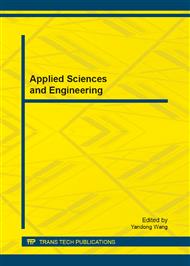p.778
p.782
p.787
p.792
p.798
p.802
p.808
p.814
p.820
Research on the Mechanism of Fatigue Crack Initiation of X60 Pipeline Steel after Per-Tension Deformation
Abstract:
It is impossible to keep pipelines free from defects in the manufacturing, installation and servicing processes. In this paper, pre-tension deformation of X60 pipeline steel was employed to experimentally simulate the influence of dents and the mechanism of fatigue crack initiation of X60 pipeline steel after per-tension deformation under cyclic loading were investigated. The results indicate that the mechanism of fatigue crack initiation is the typical cleavage fracture characteristics and the cracks mainly initiates from the non-metallic inclusions which was the local brittle fracture materials such as MnS inclusion. With the pre-tension deformation increase, the yield strength of the matrix was increased and the toughness decreased due to the work-hardening effect. With the effects of the non-metallic inclusions larger, the fatigue cracks initiated from the non-metallic inclusions easier.
Info:
Periodical:
Pages:
798-801
Citation:
Online since:
September 2012
Authors:
Price:
Сopyright:
© 2012 Trans Tech Publications Ltd. All Rights Reserved
Share:
Citation:


